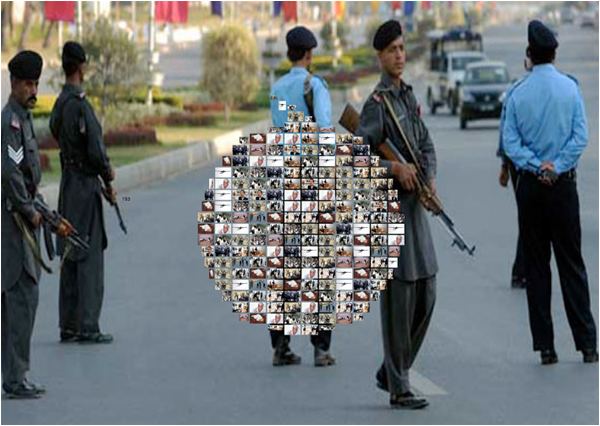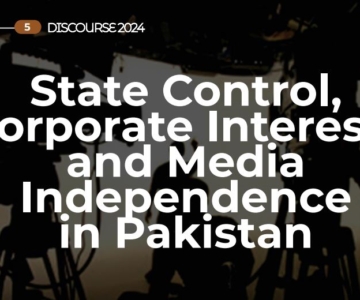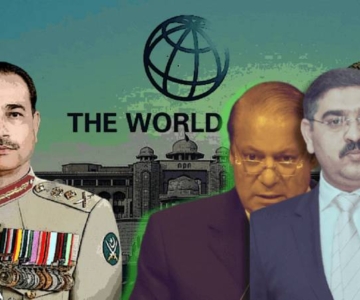Raza Rumi talks to artist Faisal Anwar, whose work plays with space and time in the digital era.
Faisal Anwar is a renowned interactive, new media artist/producer based in Canada. He is a graduate of the Canadian Film Centre’s Habitat-LAB and was earlier trained in graphic design at Lahore’s National College of Arts. Anwar’s art practice integrates art, culture and technology. He explores architectural spaces and connectivity in modern urban settings. He has shown and performed in many parts of the world including the Winter Olympics Vancouver 2010, Nuit-blanche (Toronto and New York) 2011, Six Degrees of Separation (India, Pakistan and Bangladesh) 2009 and in Dubai. His recent project Tweetgarden was showcased at the Contact photography festival held at Royal Ontario Museum in 2012. Anwar has also created several short films that were featured in festivals within Canada and abroad. His work is significant for its sociopolitical commentary and its exploration of human emotion and collective behaviour. For its unique expression and thematic content, Anwar’s work has been acclaimed around the globe.
Your interactive art practice takes a bold approach to artistic expression by connecting art, culture and technology. What have been the sources of your inspiration?
To me visual artists are like activists, poets, thinkers, visionaries reflecting on the present times and happenings around them.
Today we are observing a shift in how we live, communicate and behave thus a shift or change in the social culture.
We perform all sorts of personal acts, anxieties, confessions, wishes, prayers, updates virtually on open networks. Now the meaning of private and public spaces, and information, has evolved. This digital evolution still fulfills the same innate desire of ours, i.e. to reach out to someone or others to say our piece, dialogue and to find answers and self validation.
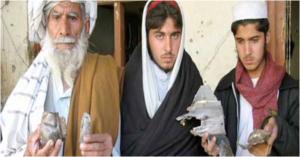
It’s not easy to find a gallery to show interactive work
Our cities live without borders and they act like portals. We are living in a new culture. For example we see that the status quo is breaking its form and ordinary people are raising their voice and have a choice to make not only in terms of what they like but also what they choose to like. Our contemporary canvas is exciting, fluid in nature and real-time. We are all making our own histories and living in a cluster of intersections. It’s a perfect delusion of self control and power. My inspirations are such moments that exist parallel to the major happenings. I like to investigate real moments, memories, juxtaposition of time zones, spaces and our day-to-day perception of societies and their evolution.
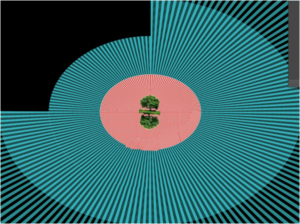
Would it be fair to call your medium participatory?
Yes. Participation is something very prominent in my practice since the last ten years. I was exploring ways to trigger an emotion or a dialogue with touch, multi-projection surfaces and engaging audiences directly. I like to create multi-layered artwork to bridge illusions of fact and fiction. I like to explore an odd space, which we inherit in today’s urban life. Participation has evolved in general in our society today. With the advancement of being connected through technology it has become a norm that a person sitting, walking, eating, at work or home alone is constantly participating remotely in some form or the other, consciously or unconsciously, invited or uninvited. It is this change in our behaviour that feeds my practice.
How did your training in the film medium contribute to your artistic vision?
My training from the Canadian Film Centre is not directly in the genre of filmmaking. I studied New Media at the Film centre’s Habitat Lab. I’ve done work in the medium of film/video, creating short films. I am fascinated by the different techniques involved, but most of my interest is in interactivity and creating new forms and experiences.
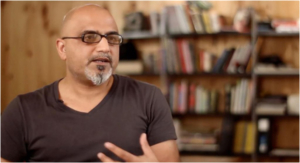
Following such practice is easier in the West with higher levels of literacy and technological advancements. Would you agree?
Not completely. I agree there is a lot of R&D and a growing group of artists practicing the new media in the West but it’s a constant sweet challenge. It’s not an easy path across the board. In some cases, technology is more easily accessible and understood in the South Asian region. New tools that are developed in the West get adopted faster in other regions.
First of all, no matter where we exhibit, it’s not easy to find a gallery to show interactive work. Generally commercial galleries refuse to work with a medium that is very hard to sell. Also, even in the West, a challenge faced is that technology bites us back and becomes in a sense magical. Generally people don’t come out of its Wow factor to engage with the conceptual narrative, and on top of it technology keeps changing super fast.
In my journey the Canadian Government’s granting system for supporting the arts has played a crucial role. Organizations like CFC media centre, Banff new media centre and other such institutions play a vital role in the development of new media art practice. Also my mentors like Ana Serano, Siobhan Flynn, Matt and Susan Gorbet, Susan Kennard, Paul Koidis, David Rokeby and so many others are working hard to shape the industry and became my inspiration. It is people like them who are making it easier for an artist like me to keep doing what I am doing and enjoying every bit of life.
I remember back in 1992 during my art education at the NCA, Salima Hashmi took all of her drawing students to the Lawrence Garden in Lahore. She recited Faiz Ahmed Faiz’s poetry and later crumpled a white sheet of paper and threw it in front of us and said Tell us what you see through drawing.
I guess what I’m trying to say is that it’s not about the differences in the East or West. It’s always the few people who inspire, facilitate and encourage us to challenge ourselves and thus produce I simply love and admire such people.
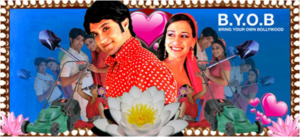
What has been the place for architectural spaces in your work?
I started exploring architectural spaces and different time zones since 2007. My fascination is with the mundane and often ignored spaces within architectural structures. I am drawn to these urban spaces such as elevators, hallways, walkways, platforms on railway stations, paths in subways, spaces that we inhabit temporarily and use to travel from one place to another. To me they act like a time-travel zone, especially when we combine that space with some temporal data as well. I am also fascinated when I stand with someone else in an elevator for 12 seconds and go higher in space or beneath the surface. What should I behave like or say to the person? Should I make contact? Is it OK to just stand and do nothing? When I see these hallways between destinations I wonder what will happen if, when we stop and talk in these spaces, what if we see someone else from a different time zone and different culture at the same place? Then there are other intangible spaces which exist e.g. I see mullahs in mosques and priests in churches raising their hands and faces to the unseen and ask for forgiveness. I see all these spaces as devices, telling a story.
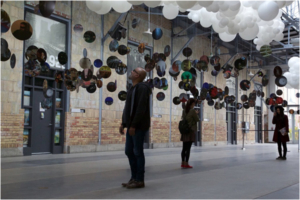
I am drawn to these urban spaces that we inhabit temporarily to go from one place to another
Your famed exhibit Six Degrees of Separation has peculiar resonance for the troubled South Asian region. What has been the response in the South Asian countries and the Diaspora? Any differences?
First of all, I actually don’t agree with the term Diaspora. It’s just like what Mawuna Remarque Koutonin talks about in his article in the Guardian Why are white people expats when the rest of us are immigrants? It’s an unnecessary label which breaks the connectedness of people and puts them in an in-between space. It is a somewhat colonial way to label everything and everyone.
The project Odd Spaces which involved Six Degree of Separation was conceived at Banff New Media Centre artist residency. I was exploring ways to work with different buildings and time zones. I got really excited by the the premise of the exhibitions when approached by Adeela Suleman and Naaiza Khan from Vasl Collective in Karachi. The best part of the exhibits was to connect gallery spaces between Karachi, Delhi and Bangladesh and travel to all these places and make few friends and install the project with local teams. There were a lot of great moments in projects and some setbacks and this is what I love about new media art in general. Each time it’s a new experience and each time we resolve new sets of challenges.
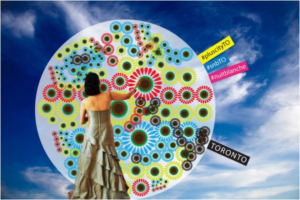
Six Degrees of Separation connected three countries through simultaneous, real-time video with no borders
The project connected the three countries through simultaneous, real time video with no borders. I had deliberately kept it simple and did not add options of sound or typing or texting thus people were left to devise simple and basic methods of communicating with the other. So they would write with markers on paper and hold it up for the camera. It was really interesting to experience how eager and enthusiastic people were to connect within these regions and how immediately similarities were highlighted rather than differences. I remember the project was happening during the month of Ramazan, so something as simple as the sherbet drink Rooh Afza was talked about. Thus within seconds the people of these nations were able to relate to each other and were interacting in a casual atmosphere and laughing together.
I recreated the same project in Vancouver with CODELive and CFC Media Lab collaboration, curated by Malcolm Levy at the 2010 Winter Olympics. This time I was working with 13 hours of time difference and was working with Karachi, Bangladesh and Vancouver. This time I also introduced a layer of cellular phone or text messaging. Surprisingly the project worked very differently in this context. First of all, the time difference was creating some hindrances and also there was a struggle to engage and connect. Perhaps this was due to an absence of context and maybe that’s why we all like to live in groups with similar people, cultures and languages so that we don’t need to make an attempt to reach out and know the other.
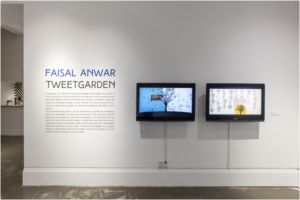
The Odd Spaces project is still an ongoing investigative work and now developing into new art forms utilising open networks and social data. The new projects I’ve been working on are called Tweetgarden and CharBagh.
Of late, Pakistan is catching up with the global digital art movements. How do you see that evolution?
Digital Art is simply a medium. Yes, it is different from other mediums but it is the content shown through the medium which comes foremost. Pakistan is producing great contemporary art and it’s refreshing to see an alternate narrative to talk about socio-political questions. We have a strong and long history of storytelling in our painting, poetry and society in general. My generation belongs to the time when the regime of General Zia was at its peak and religion and force was used to suppress free expression to distort history, religion and culture. But due to the suppression, the artists of the time developed hidden symbols, techniques and convoluted means to raise their voices silently. I believe most of the new art movements in Pakistan still follow the same legacy and methods which of course, when combined with the new media available, would again come out as powerful as it did back then.
As far as the evolution of the digital medium is concerned, that is inevitable. We will see a trend in the new generation of artists gravitating towards the newer media but we have long way to go.
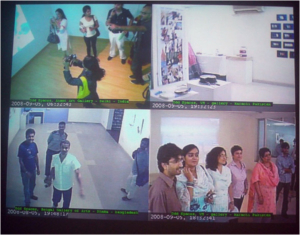
Have you been following the evolution of art schools in Pakistan? What is scope for connecting art instruction in the West and Pakistan? Would that benefit the local academic scene?
Yes, I have been going back and conducting workshops and artist projects at the IVS, Karachi and BNU, Lahore. I have been also involved in mentoring students, start-ups and organisations on various aspects in art, design and UIX. I think Pakistan’s art students are raw talent pure, enthusiastic but confused. They need the right mentoring and some sort of directions. Our instructors are doing their best within the prevalent political mess but unfortunately we are not producing thinkers, leaders and innovators anymore and the gap is getting larger in understanding the local historical and cultural context. It’s scary but depends on who is seeing it and from where.
When I was living in Pakistan, I used to believe that when someone spreads knowledge, a way of life, technology or trend it has to reach out to everyone across the world at the same level and in the same spirit. But I was wrong. The beauty of the world is that we all live in different time zones with different backgrounds and cultural contexts and we have to recognise and own our space.
As they say, evolution is a slow process. Most of the time, a simple solution is in knowing the right process and following the right path. I think connecting Western instructional models with Pakistan is a great idea and is already happening on many levels. But we need to be careful and mindful of learning but not adopting blindly. Knowledge should be adaptive to our own socio-cultural context for a real change to occur. We all need to work to stop the brain-drain in Pakistan and develop thinkers and leaders to encourage innovative ideas and make Pakistan and the world a better place for all humanity.
Published in Friday times
